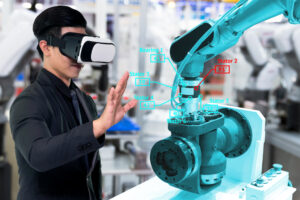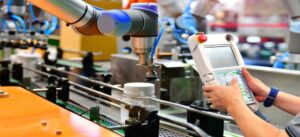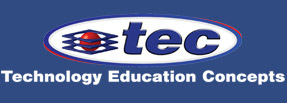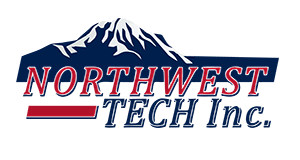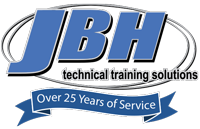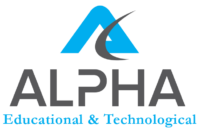This Guest Blog was originally published on Education Weeks Education Futures Channel on June 7, 2018 – See article here
By Ido Yerushalmi, CEO of Intelitek.
Seeing gaps between what you’re teaching and what your students need to be able to compete effectively in the modern workforce? Here’s how to close them.
We have experienced four industrial revolutions in the last 250 years. These revolutions have completely changed the industrial world, but also many aspects of the community, the practical nature of the workforce, and the way we live in modern times.
In the educational world, the change has not happened as quickly and at Intelitek we have implemented an approach – Education 4.0 – that aligns modern learning with modern industry. Education 4.0 is having a similar, profound impact on how instructors teach and how students learn. Put simply, it defines “what it takes” to cultivate active members of society and employees who can play a valuable role in the new industrial workspace.
The rapid change in industry has caused the misalignment between what industry needs in this respect and the skills students graduate with. The educational path taken in many schools and classrooms today–isn’t always perfect. In fact, there are some clear gaps, as evidenced by the lack of qualified, skilled workers in the current (and emerging) labor pool.
Here are six ways to close those gaps and get your school on the Education 4.0 train today:
- Create a tailor-made learning path. Design a personal learning path that suits each student’s strengths and interests. This will allow them to build knowledge based on their individual previous knowledge or experience, and on their acceptance of the new information. Solutions should never force all students to learn the same thing at the same time and at the same pace.
- Leverage formative assessments. This will enable educational staff to help students identify their own strengths and also pinpoint their own weaknesses. A formative assessment is focused on helping the student accept and learn the new information and does not classify students based on test results.
- Transform teachers into mentors. Teachers must be trained on the fine points of building new curriculum and offering every one of their students a personal journey. They should be expected not to lead, but rather to support learning. For example, teachers must be able to use their own vast knowledge to assist students in a mentoring capacity during their own personal journeys.
- Embrace divergence and pluralism. Students are not the same and they are also not expected to be the same. The role of the education system is to help students identify the field in which they are suited and help them to excel at it. When teachers find their areas of aptitude, it gives the students a better chance to serve their society as adults.
- Stop equating education with knowledge acquisition. Education–not knowledge transfer–should be every school’s goal. Today’s schools will determine the development of society in the future. And while no one can predict the future, the universal values of doing good, accepting others, and collaborating with them will always be essential. This will hold true even when the graduates of today’s education system take on the societal roles of tomorrow.
- Put teachers at the heart of Education 4.0. Contrary to other beliefs, no one really wants to replace teachers with robots. In fact, teachers and mentors should be one and the same, and should shepherd students to success in the work world and in life. Design programs for teacher training, give them pedagogic tools, and provide them with a support structure that improves the relationship between the teacher and the student, enabling the former to interact more effectively. And remember that technology is there to serve teachers, allowing them to be even more effective instructors in the long run.


